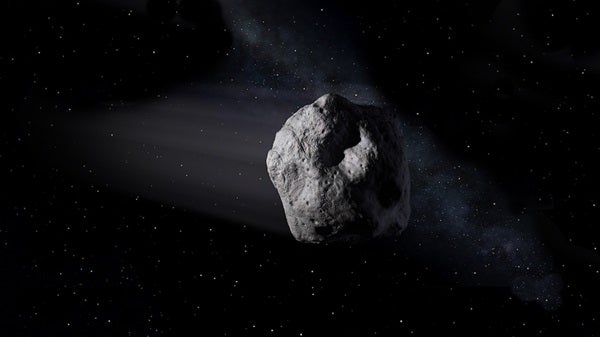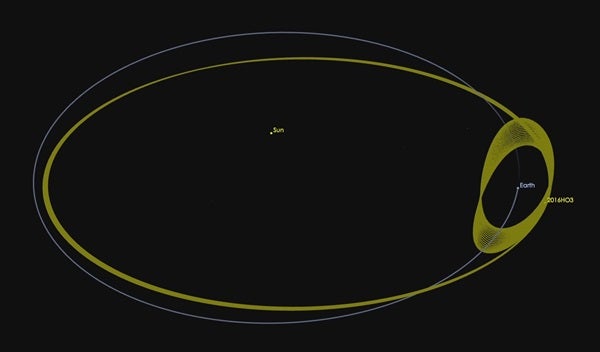2016 HO3 seems like old news now, as Earth’s original Moon — the OG of asteroids — has captured all astronomy headlines here of late. On August 21st, the Moon will pass between the Earth and Sun, causing what Dr. Thomas Zurbuchen, head of the NASA Science Mission Directorate, believes will be the most-viewed total solar eclipse in history. Totality begins in Oregon and ends in South Carolina; 200 million people live within a day’s drive of its path.
As eclipse fever sweeps the United States, we can’t help but wonder when 2016 HO3 will get more love. Will eclipse chasers everywhere ever flock to see a total eclipse from Earth’s mini-moon?
To quote NASA, “No.”
“It’s far too small,” explains Paul Chodas, manager of NASA’s Center for Near Earth Object Studies at the Jet Propulsion Laboratory.
Of course, actual size isn’t the only factor in an eclipse. The Moon is much smaller than the Sun, but August 21st, that won’t stop its apparent size from completely covering the other, thanks to their relative distances from Earth.
“A lot larger,” Chodas says.
Like the Moon, 2016 HO3 doesn’t always orbit directly between Earth and the Sun. “2016 HO3 is actually in a heliocentric orbit rather than a geocentric orbit,” says Dr. Alex King, chair of physics and astronomy at Austin Peay State University, the college closest to August 21st’s point of greatest eclipse. No matter what size 2016 HO3 is or how often it comes between Earth and the Sun, King says the asteroid’s orbit changes the vocabulary astronomers use: “If it were to appear to pass in front of the Sun relative to the Earth, astronomers would more properly classify it as a solar transit.”
Also, this orbit is generally above or below the ecliptic plane. “Once each orbit, it overtakes Earth,” King explains, “and once each orbit the reverse happens (Earth overtakes HO3). For a transit to occur, it would have to happen during the overtaking process.” The next time this happens is during the years 2312 and 2313. So even if it were big enough, our favorite mini-moon still wouldn’t get a lot of chances.
When it does transit, Chodas says, “The asteroid will be about 15 million kilometers [9 million miles] from our planet.” That’s 39 times the distance between Earth and the Moon, the latter of which Chodas says “is just large enough.” So to cause a total solar eclipse, Earth’s mini-moon would need to be 39 times larger than the real deal. He continues, “The Moon is 3,475km [2,000 miles] in diameter, which means the asteroid would have to be 39 times 3,475 or about 135,400km [84,000 miles] in diameter. That’s very large, almost the diameter of Jupiter (143,000km [90,000 miles]).” In comparison, 2016 HO3 is around 0.05km (0.03 miles) wide.
“The asteroid would have to be 2.7 million times bigger than it actually is to cause an eclipse! Or, if it stayed its original size, and just moved close enough to eclipse the Sun, it would have to be 2.7 million times closer, or only 5 kilometers [3 miles] above the observer,” Chodas says. “In other words, it would have to be flying through our atmosphere lower than a typical jetliner!”
Much as we love our mini-moon and all other astronomy things cute and small, anyone who’s seen the movie Deep Impact will agree it’s best to keep any and all asteroids out of Earth’s atmosphere. So we’re sorry, 2016 HO3, but it looks like you’re not going to cause a solar eclipse after all. And we kind of hope it stays that way.











